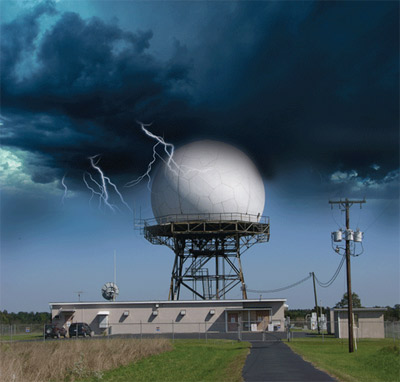
Photo 1. Emergency. Critical operations data comes in many forms and performs many functions. Many operations that we think are automatic and seamless are in reality a programmed action based on the data written in a script, for all the pieces to play out in perfect order.
Much, if not all, of this data is accessed via electronic devices. Without access tocriticaltypes of data, communications can be adversely affected, necessary medical data could be unreachable, emergency plans inaccessible, and emergency service personnel can no longer function. How do we prevent a situation like this from occurring? This question and others just like it have the electrical industry standing at attention and taking notice. One of the solutions is through the incorporation of critical operations data systems.
New Vocabulary
A new term with regards to mitigating data loss in an emergency situation has been introduced in the 2011National Electrical Code(NEC). This term —critical operations data systems— has now been added and there are a few changes. Previously when information technology equipment (ITE) rooms were designed and built, the provisions of NEC 645 were adhered to along with the other applicable code provisions. With the exception of the new terms we will discuss in this article, that statement generally still holds true.
The need has been identified to providezones, to refine the requirements forremote disconnect controls, and to includecritical operations data systems, which are but a few of the new terms in Article 645 for the 2011NEC.
A new term you ask? I know you are thinking, Youmust mean Article 708, Critical OperationsPowerSystems, as this is a fairly recent addition to the NEC vocabulary. But that’s not the case, this is critical operations data systems; the need to access data all the time at any time has always been a critical element to save lives should the need arise.
Since the addition of Article 708 in theNEC, we are seeing a systematic approach of identifying the elements that need to be addressed during an emergency and tying them together to provide reliability and continuity of systems.
Where Are We Headed?

Photo 2. Doppler Radar. Data for this 3D Doppler radar is always considered critical when it comes to up-to-the-minute information it conveys about approaching weather that could turn violent in the blink of an eye. This type of critical operations data system has saved countless lives through its implementation through many states that have inclement weather on a regular basis.
Recent natural and manmade events have predicated the need for a more robust and reliable data infrastructure; in this article we show how the National Electrical Code has risen to meet the challenge. We also show how the need for critical operations data systems is coupled with support from Article 708, Critical Operations Power Systems, and how these areas fit into the designated critical operations area (DCOA) scheme.
In this article, the termcritical operations data systemsis meant to reflect those types of systems that control or support services that can or could affect life safety prior to, during, and after a local, regional, national, international, or global event.
In Case of an Emergency
The need for many types of data in an emergency situation is not only necessary, but critical in many cases. This need is not just exclusive to a natural or manmade disaster, but the chain reaction of events that are secondary to the main event can further affect access to critical data as well.
Take the case of the car accident secondary to the loss of traffic signal data, or loss of life due to data loss of medical records that need to be checked for drug interactions prior to administering life saving medicines. These scenarios and hundreds of thousands just like or similar to them have happened, and continue to happen, across the globe when the need to access data is compromised.
The need for critical operations data systems is readily apparent and should be addressed now. Designation, isolation, continued operation, and reliability are some of the key factors, and that same reliability is necessary for the power source(s) that supply these systems as well.
Business as Usual
All of this switching, turning on and off, things like sampling the temperature, and keeping time, and following a simple data program are routine functions nowadays. These types of scenarios while having the potential to become critical are for the most part never thought of during the course of a day.
One rarely thinks about the operation of that old traffic signal on the corner of 5th and Euclid, or the street lights that faithfully come on night after night to safely light our journey down the highway. Who would even stop and wonder if the time and temperature sign at the local bank quit working, unless it was an extremely hot day or, even worse, you’re late for work?
Almost Half a Century and All Is Well

Photo 3. Military NATO AWACS. Day and night many thousands of highly trained men and women in the service to our country rely on critical operations data systems to ensure that the way of life we have come to know and love is always safe under a watchful eye, and that we are able to defend this great nation at a moment’s notice.
Here in Texas and in other severe weather prone areas, critical operations data systems have been earmarked and the necessary power systems (COPS) have been provided in designated critical operations areas (DCOAs) for years prior toNECmandates due to many years of natural disasters and to the desire to provide early warning and to minimize loss of life.
As we see more and more of these events and the devastation that is left behind, we have determined one thing for sure, we need access to critical data at all times during an emergency. While we can’t control these events, we can minimize the effects by ensuring that theNEChas provided the guidelines and the requirements for data that is critical to maintain emergency services, fire-prevention and life-saving measures, and to execute and control critical functions and facilities.
While critical operations data systems is a new term for the 2011NEC, we are fast starting to see how it is taking shape and being implemented around the country in not just the metropolitan areas but in rural areas that are geographically cut off from major population bases.
From the Beginning
Critical operations data systems are those systems that are designated, generally by an emergency management director or his or her designee, as the portion of an existing data system or perhaps a new system that is necessary and will be designated solely for the use for the function of critical operations in the event of an emergency.
Once this has been designated, the AHJ steps in and ensures that the requirements in Article 645 and other articles have been met prior to the commissioning and final start-up of these systems. Continuous operation is mandated for a critical operations data system for reasons of national security, emergency services, emergency management, and business continuity.
Many operations that might be considered day-to-day services, like running sewer, potable water supply and others, can become major factors when it comes to designation of the DCOAs and the critical data that will be required to run the systems in these designated areas and of the critical operations power systems (COPS) to run them.
Where Do We Start?
Remember when towns and cities used to hold disaster drills? This was a time when plans and contingencies were formed and everyone knew his or her role; a mock disaster would be played out to test the readiness and effectiveness of an area’s plans and the resources to withstand such an event and to contain and maintain order and to preserve life. Welcome to the digital age.
With more and more demands on our time, we have turned over many of our previous tasks to microchips and programs that rely on data to perform a series of commands or exercises.
Over the years, productivity and reliability have proven to be so successful that many critical operations have become mechanized and rely solely on data — to the point that without this data these critical functions would cease. So began the need to secure the data that runs things.
The NEC and Article 645
Information technology equipment and the room or rooms that house it have continued to evolve to meet the demands of technology. Now we look to these areas or zones within the information technology room(s) to house portions of a data system, or perhaps a data system itself, for the express purpose of safeguarding critical data.
We are also required to ensure that power is provided for these systems in accordance with NEC 708.22. We are tied to Article 708 for a critical operations power system from the need for continuous operation as mentioned in the definition of critical operations data system — for “public safety, emergency management, national security, or business continuity.”
In the event of the disruption of the normal system, the critical operations data system, which will generally be located in the designated critical operations area (DCOA), is required to have a COPS system with the “capacity and rating for all loads to be operated simultaneously for continuous operation with variable load for an unlimited number of hours” to comply withNEC708.22 to ensure access to critical data. The only exception to this continued operation is for purposes of maintenance; this is a tall order.
645.2 Definitions, Zones
The termzonehas been introduced in the 2011NECto identify that area within the information technology equipment room that will be the home of these critical operations data systems, once the area has been designated as the critical operations area or (DCOA). It is quite conceivable that a facility could have many zones within it, depending on the complexity and the need for the critical operations data system.
645.10(A), Remote Disconnect Controls
Provisions have also been made for a disconnecting means in 645.10 for the remote disconnecting means within the information technology room. A remote disconnecting means is required to be located at an approved, readily accessible location for authorized and emergency personnel in case of fire.
Remote disconnects are required to be grouped and identified when controlling HVAC systems and electronic equipment power, with a single means allowed to control both systems.
Conclusions
The lack of critical data in an emergency situation can be devastating. We have come to the place where critical data needs to be addressed for purposes of continuity and reliability. We have also seen that theNEChas taken the challenge seriously and that requirements are taking shape to address this issue of data access. As new issues and ideas are compared and the correlation of all of these elements happens, we will continue to see progress.
The Future
We have seen the devastation and loss of life and property that a disaster of any type brings to our cities and towns. With that in mind, we look towards theNEC, the electrical industry and others to continually refine and develop requirements and systems that will provide access to critical data anytime, anywhere.









Find Us on Socials